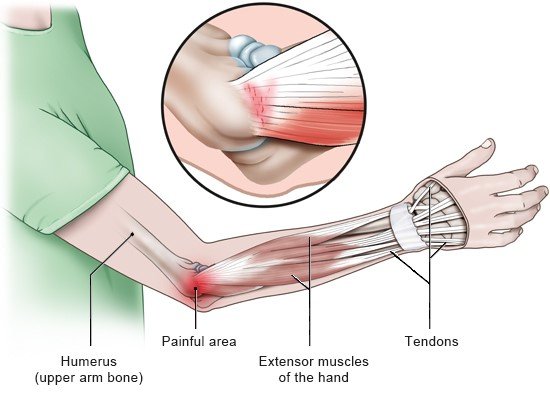The goal of treatment is to relieve the pain and to improve the mobility and strength of the arm and wrist.
Trying to avoid activities that provoke the symptoms – or reducing those activities enough to make the symptoms improve – may already help. Special exercises to strengthen the forearm and wrist, called “eccentric exercises,” can help to relieve the pain. Manual therapy by a physiotherapist can help too.
Doctors often use very different approaches to treat tennis elbow. But only a few of these treatments have been proven to be able to relieve the symptoms. First and foremost, tennis elbow requires patience. The symptoms usually clear up after a few months without any special treatment.
Non-steroidal anti-inflammatory drugs (NSAIDs) can provide short-term relief. Steroid injections can also relieve pain, but they may disrupt the healing process. A few studies suggest that ultrasound therapy can somewhat improve the pain.
There is no proof that the following treatments help, though: various injection treatments (for example with blood taken from your own body or Botox), laser therapy, electrotherapy, massage, shockwave therapy and acupuncture. German statutory health insurers often don't cover the costs of these treatments.
If the symptoms continue for a long time and other treatments don’t help, surgery is sometimes suggested. There has hardly been any research on tennis elbow surgery, though.


